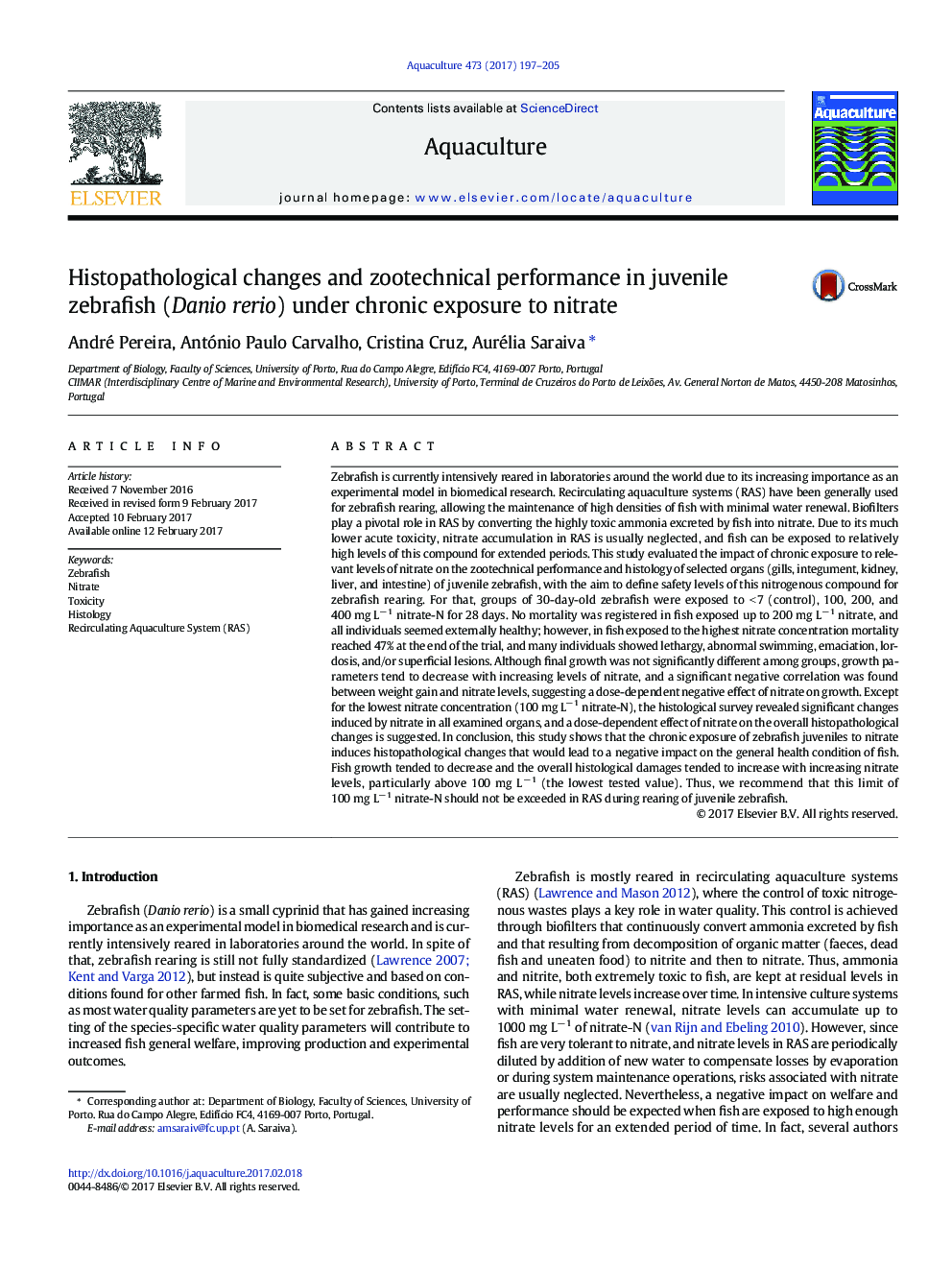| کد مقاله | کد نشریه | سال انتشار | مقاله انگلیسی | نسخه تمام متن |
|---|---|---|---|---|
| 5539018 | 1552815 | 2017 | 9 صفحه PDF | دانلود رایگان |

- Zebrafish juveniles are generally reared in RAS, where are exposed to relatively high levels of nitrate
- Histopathological changes and the zootechnical performance of zebrafish juveniles were evaluated after exposure to nitrate
- Zebrafish growth tended to decrease and histological damages to increase with increasing nitrate levels
- A safety level of 100 mg L-1 nitrate-N is recommended for rearing of juvenile zebrafish
Zebrafish is currently intensively reared in laboratories around the world due to its increasing importance as an experimental model in biomedical research. Recirculating aquaculture systems (RAS) have been generally used for zebrafish rearing, allowing the maintenance of high densities of fish with minimal water renewal. Biofilters play a pivotal role in RAS by converting the highly toxic ammonia excreted by fish into nitrate. Due to its much lower acute toxicity, nitrate accumulation in RAS is usually neglected, and fish can be exposed to relatively high levels of this compound for extended periods. This study evaluated the impact of chronic exposure to relevant levels of nitrate on the zootechnical performance and histology of selected organs (gills, integument, kidney, liver, and intestine) of juvenile zebrafish, with the aim to define safety levels of this nitrogenous compound for zebrafish rearing. For that, groups of 30-day-old zebrafish were exposed to < 7 (control), 100, 200, and 400 mg Lâ 1 nitrate-N for 28 days. No mortality was registered in fish exposed up to 200 mg Lâ 1 nitrate, and all individuals seemed externally healthy; however, in fish exposed to the highest nitrate concentration mortality reached 47% at the end of the trial, and many individuals showed lethargy, abnormal swimming, emaciation, lordosis, and/or superficial lesions. Although final growth was not significantly different among groups, growth parameters tend to decrease with increasing levels of nitrate, and a significant negative correlation was found between weight gain and nitrate levels, suggesting a dose-dependent negative effect of nitrate on growth. Except for the lowest nitrate concentration (100 mg Lâ 1 nitrate-N), the histological survey revealed significant changes induced by nitrate in all examined organs, and a dose-dependent effect of nitrate on the overall histopathological changes is suggested. In conclusion, this study shows that the chronic exposure of zebrafish juveniles to nitrate induces histopathological changes that would lead to a negative impact on the general health condition of fish. Fish growth tended to decrease and the overall histological damages tended to increase with increasing nitrate levels, particularly above 100 mg Lâ 1 (the lowest tested value). Thus, we recommend that this limit of 100 mg Lâ 1 nitrate-N should not be exceeded in RAS during rearing of juvenile zebrafish.
Journal: Aquaculture - Volume 473, 20 April 2017, Pages 197-205